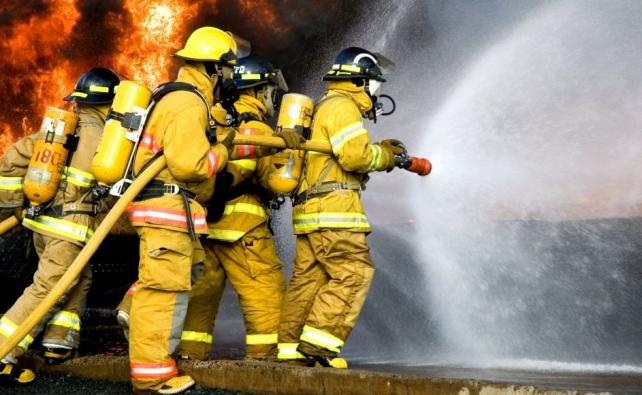Basic fire fighting Training– a large number of fatalities, many wounds, it appears to be the reports all say the same thing: the issue reduced to mistakes in basic fire ground activities and standards. Regardless of how encountered, a firefighter’s mission consistently returns to the basics. No firefighting activity can be fruitful without the appropriate, safe execution of the central abilities shrouded in Firefighter Basic training.
Start Training’s Basic Fire Fighting area has courses that can construct a strong establishment for new staff and keep firefighter veterans’ abilities invigorated.
ll fires can be extremely risky and dangerous. Your safety ought to consistently be your essential concern when endeavoring to battle a fire.
Before choosing to battle a fire, be sure that:
- The fire is little and not spreading.
- A fire can be twofold in size inside a few minutes.
- You have the legitimate fire quencher for what is consuming.
- The fire will not obstruct your exit on the off chance that you can’t handle it.
- A decent way of guaranteeing this is to keep the exit at your back.
- You realize your fire quencher works. Review dousers once per month for marks, spills, or different indications of harm.
- Guarantee the strain is at the suggested level.
- On quenchers outfitted with a check, the needle ought to be in the green zone – not very high and not very low.
- You realize how to utilize your fire douser (see Finish assessment beneath).
- There’s not sufficient opportunity to peruse guidelines when a fire happens
- Before utilizing your fire douser, make certain to peruse the guidelines before it’s past the point of no return. Even though there is a wide range of sorts of fire quenchers, every one of them works likewise.
- Utilize this abbreviation as a fast reference (it is a smart thought to print this reference and pin it close to your fire douser):
- What is the reason for the program?
- To prepare local area fire contenders to the local area’s supported degree of administration. The School of Local area Government in a joint effort with the Workplace of the Fire Marshall (OFM) and School offers firefighter training that will meet the surveyed needs of the local area.
What are the targets of the program?
To furnish local area fire contenders with the abilities and information needed to sufficiently play out their separate jobs and obligations inside the fire administration.
Where and Why?
Local area-based fire contender training is accessible to all nearby fire offices and depends on the local area’s embraced level of administration and set up a training plan. Training is given by licensed fire administration educators.
What Fire fighting training is accessible to my local area?
All accessible training is relevant to a Local area’s characterized level of fire administration and depends on NFPA 1001 educational plan and lines up with the NWT Fire Assurance Lattice; see beneath connect.
COURSES Accessible
Chamber Direction to Fire Insurance
MACA is accessible to convey a local area direction meeting on suggested fire assurance measures and best practices for building up and keeping a nearby fire insurance administration.
Fire Safety Training
MACA is accessible to give training and backing to nearby fire instructors with program arranging, advancement, and execution.
Scene Security and Safety Training
This training comprises of basic administrative abilities and information in danger evaluation, episode scene the executives and workforce responsibility. Training is accessible for nearby fire warriors and people liable for getting and dealing with a primary fire episode with non-mediation activities. Incorporates parts of NFPA 1021 Expert Fire Official Norm; and Episode Order Framework (ICS) Canada
This is a 1 day, 6 hours course: 4.5 long stretches of guidance and 1.5 long periods of commonsense testing.
Guarded Firefighter Part I, II, and III
The training comprises basic information and abilities in outside firefighting activities. Obligations are performed from the outside of the design and away from regions that might be quickly perilous to life and wellbeing. Incorporates safe reaction, scene security, and openness insurance exercises. The course comprises a normalized set of modules and useful abilities dependent on NFPA 1001 training guidelines.
Protective Firefighting Part I:
Themes incorporate:
- Firefighter Safety
- Individual Defensive Hardware
- Fire Conduct
- Devices and Gear
- Interchanges
- Episode Order Framework
This is a 3-day, 18-hour course: 11.5 long stretches of guidance and 7 hours of user testing.
Cautious Fire fighting Training Part II
Essential: People group Based Cautious 1
Training incorporates:
- Reaction and Size-up
- Water Supply
- Siphon Tasks
- Assault Lines and Froth
- Fire Concealment
- Outrageous Chilly climate Tasks
This is a 3.5-day, 25.5-hour course: 15 hours of guidance and 10.5 long stretches of user testing.
Cautious Fire fighting Training Part III
Essential: People group Based Protective 1 and 2
Training incorporates:
- SCBA
- Stepping stools
- Firefighter Restoration
- Versatile Fire Quenchers
- Hazardous materials Mindfulness
This is a 3-day, 25-hour course: 14 hours of guidance and 11 hours of commonsense guidance/testing.






